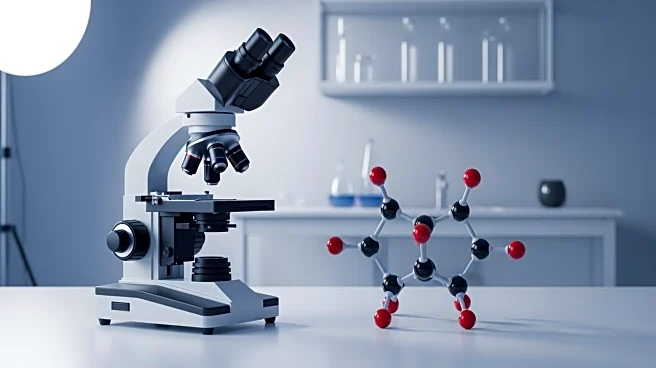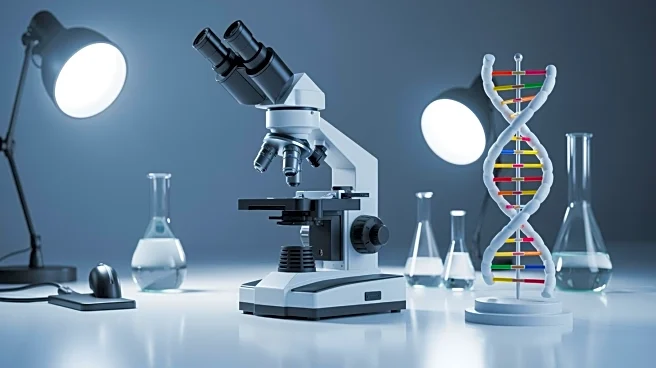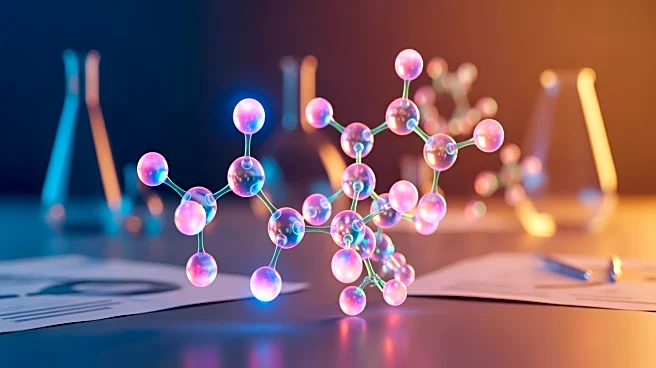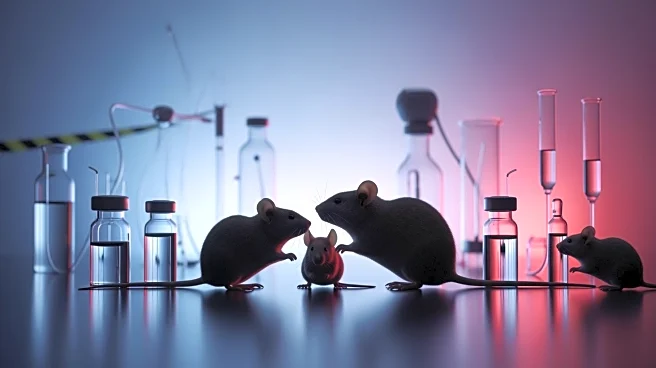What's Happening?
Recent research has identified 4,4’-dimethoxychalcone (4,4’-DMC) as a compound with significant geroprotective properties. This chalcone has been shown to extend the lifespan of various organisms, including yeast, nematodes, fruit flies, and human cell
lines. The compound promotes autophagy, a cellular process that removes damaged components and facilitates cellular renewal. 4,4’-DMC was found in the leaves and stems of Angelica keiskei Koidzumi, a plant used in traditional Asian medicine. The compound has demonstrated cardioprotective effects in mice and has been linked to reduced aging-associated production of reactive oxygen species. Additionally, 4,4’-DMC has shown potential in improving fertilization rates and developmental potential of oocytes, as well as mitigating traumatic brain injury effects in mice.
Why It's Important?
The discovery of 4,4’-DMC's geroprotective properties could have significant implications for aging-related research and medicine. By promoting autophagy and reducing oxidative stress, 4,4’-DMC may offer a new avenue for extending healthy lifespan and combating age-related diseases. Its potential applications in cardioprotection, neuroprotection, and fertility enhancement highlight its versatility. The compound's ability to selectively eliminate senescent cells suggests it could be used to address chronic inflammation and other aging-associated conditions. This research could pave the way for developing new treatments that improve quality of life and longevity.
What's Next?
Further studies are needed to explore the full range of 4,4’-DMC's effects and its mechanisms of action. Researchers may investigate its potential in treating neurodegenerative diseases, cancer, and other age-related conditions. Clinical trials could be conducted to assess its safety and efficacy in humans. Additionally, the development of delivery methods that enhance its bioavailability and target specific tissues could be pursued. The compound's interaction with various cellular pathways, including autophagy and oxidative stress, will likely be a focus of future research.
Beyond the Headlines
The identification of 4,4’-DMC as a senolytic agent opens up possibilities for its use in regenerative medicine. By eliminating senescent cells, it could help reduce the burden of age-related diseases and improve tissue function. The compound's ability to modulate transcription factors and cellular pathways suggests it could be used to fine-tune cellular processes involved in aging. Ethical considerations regarding the use of such compounds in anti-aging therapies will need to be addressed, particularly in terms of accessibility and long-term effects.













